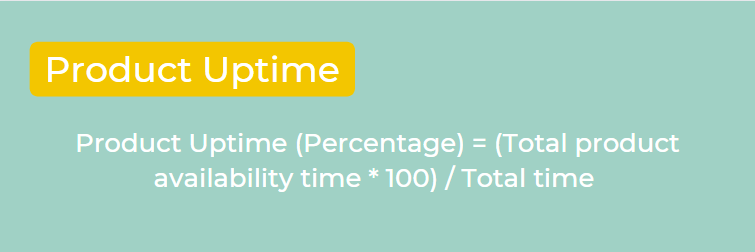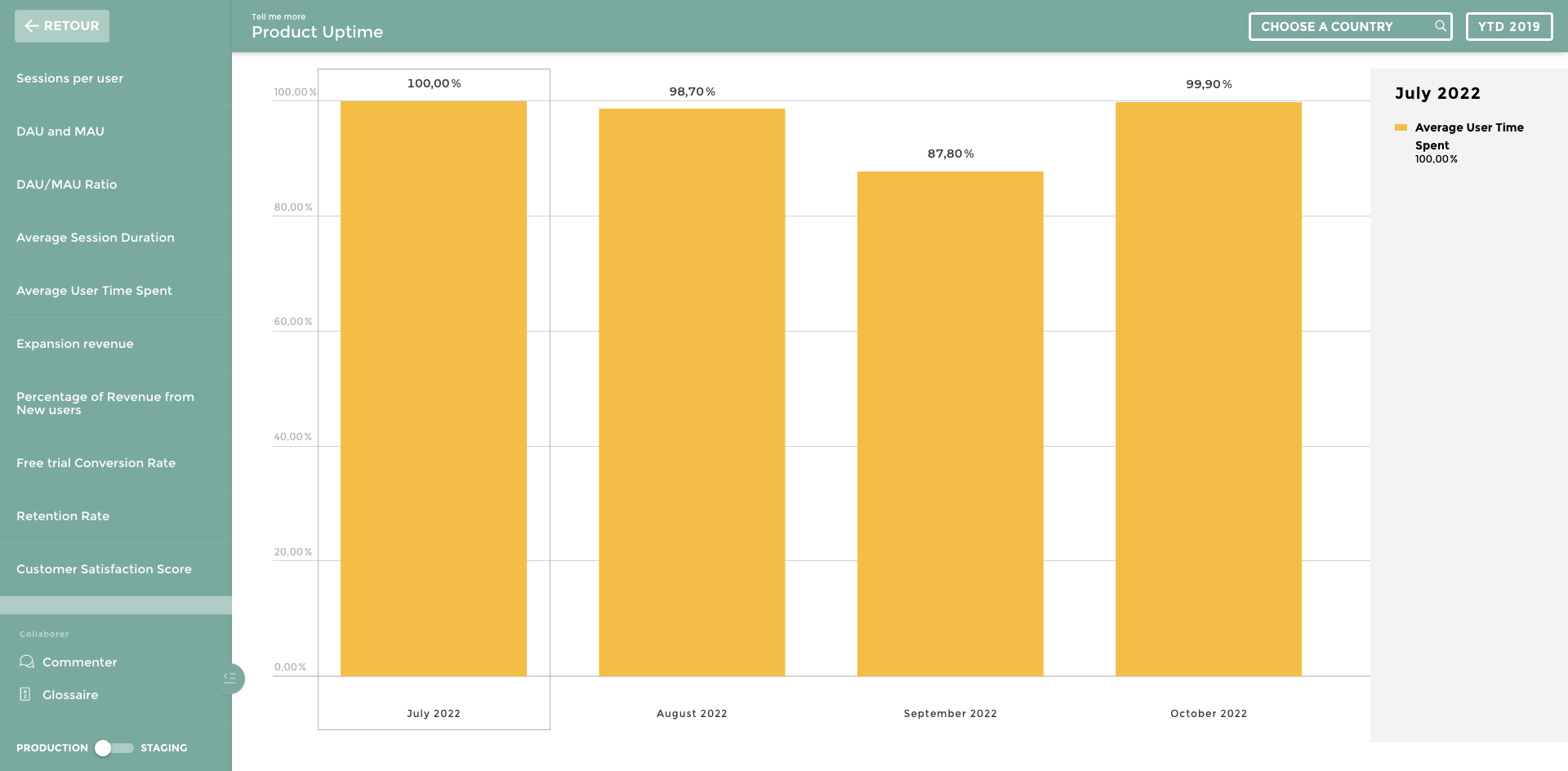Product Uptime - What does it mean?
Uptime can be simply defined as the measure of a product's availability to its end users. To measure product uptime, businesses use the following formula:

Every company aims for 100% uptime, but most will consider 99.999% adequate enough to ensure that its end users have a seamless experience.
Why is Uptime Monitoring Important?
For web-based companies, their website availability is the key to success. After all, what good is a web-based product that isn't functioning 100% of the time? A product with a lower uptime percentage is almost certain to experience higher churn and end-user frustration, which affects a company's growth and bottom line.
It can be very difficult to manage a website-based product, with networks, hardware, authentication services, and firewalls all presenting an opportunity for failure. If any of these integral factors fail, your product will experience downtime.

How to Monitor Uptime
Because IT departments monitor and manage so many aspects of a product, tracking uptime and downtime can offer plenty of benefits, which include:
- Downtime alerts: By using a modern monitoring tool like Toucan, your team receives real-time alerts that allow your company to track its product availability. Understanding the problem in real time allows changes to be made instantly, bolstering your company's bottom line. Alerts can be the difference between fixing a small problem in minutes or a product devolving into chaos.
- Demonstrate reliability: Who wants to invest in an unreliable product? As a web-based business, it is your responsibility to demonstrate your product's efficiency. Most importantly, investors will ask for uptime history to ensure that they are investing in a polished product. Monitoring your uptime can be helpful to raise funding and prove that your product is reliable
- Protect brand reputation: Let's explore an everyday example. You're an avid Netflix watcher and one weekend, just as you sit down to watch a show you love, the service crashes. You're sitting on your couch and don't have cable, so you purchase a monthly subscription to a competitor's offering. This scenario applies to any SaaS business: clients must trust your product to continue using it.
- Maintain service levels: Although this may not be true for B2C companies, B2B vendors must provide enterprise clients with service guarantees. This often includes establishing service level agreements (SLAs) and sticking to them. If a customer finds that a vendor breached their SLAs, they may be subject to legal action. By tracking uptime, businesses can be sure that SLAs are abided by and take measures to prevent SLA breaches.
Why Does Uptime Monitoring Matter for Your Business?
Your IT department is swamped with software, network, and hardware maintenance. Although your product is the most important aspect of your web-based business, it's easy to make a mistake that leads to downtime. Why not make sure that those don't happen?
Using a tool like Toucan to monitor your uptime data allows IT departments to connect their website data to a dashboard that updates metrics in real time, on any device. Using a monitoring solution can fix a flawed website with problems, and your company's bottom line will benefit from the results.


.png?width=710&name=CTA%20Template%20%E2%80%94%20Free%20Trial%20(2).png)